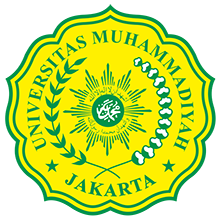Analysis of Heavy Equipment Quantity using Quantitative Methods Software (QM) for Windows V5 on Road Infrastructure Works
Abstract
Data from the Geological Agency, Ministry of Energy and Mineral Resources (ESDM) in 2018, Indonesia has 37 billion tons of coal with proven reserves of 20.11 billion tons and estimated reserves of 17.02 billion tons. The total reserves increased by 12 billion tons compared to the previous year. To increase production and reserve coal, it is necessary to build mine roads to connect other mining areas. One of them is the work of transporting soil material for road embankment work. The constraints that are often encountered are limited resources and high cost of equipment. Therefore it is necessary to optimize the need for heavy equipment using Quantitative Methods Software (QM) for Windows V5. The data used in this study are primary data taken from the interview process and data in the form of related secondary documents, namely the RAB, Scheduling, SPK and other documents. The tools that will be used and optimized are a lot of digging and loading equipment such as Excavator PC400 with a bucket capacity of 2.6 m3, Excavator PC300 with a bucket capacity of 1.8 m3, Excavator with a bucket capacity of 0.8 m3 and a Dump Truck with a body capacity of 22.3 m3 as transportation equipment. The results of the research data analysis show that the most optimal number of tools needed for the road works is 1 PC300 Excavator unit, 1 PC200 unit and 3 Dump Truck (ADT) units for a work volume of 99.626 m3 and the optimal work duration is 814 hours and the labor cost is Rp. 2,781,227,681. Excavator with a bucket capacity of 0.8 m3 and a Dump Truck with a body capacity of 22.3 m3 as transportation equipment. The results of the research data analysis show that the most optimal number of tools needed for the road works is 1 PC300 Excavator unit, 1 PC200 unit and 3 Dump Truck (ADT) units for a work volume of 99.626 m3 and the optimal work duration is 814 hours and the labor cost is Rp. 2,781,227,681. Excavator with a bucket capacity of 0.8 m3 and a Dump Truck with a body capacity of 22.3 m3 as transportation equipment. The results of the research data analysis show that the most optimal number of tools needed for the road works is 1 PC300 Excavator unit, 1 PC200 unit and 3 Dump Truck (ADT) units for a work volume of 99.626 m3 and the optimal work duration is 814 hours and the labor cost is Rp. 2,781,227,681.
Keywords
Full Text:
PDFReferences
APAAB United Tractors. (2012). Heavy equipment management.
Bogenberger, C., Dell'Amico, M., Fuellerer, G., Hoefinger, G., Iori, M., Novellani, S., & Panicucci, B. (2015). Two-phase earthwork optimization model for highway construction. Journal of Construction Engineering and Management, 141(6), 1–11.https://doi.org/10.1061/(ASCE)CO.1943-7862.0000973
Burt, C.N. (2008). An Optimization Approach to Materials Handling in Surface Mines. (August), 23;26.
De Lima, RX, Júnior, EFN, Prata, BDA, & Weissmann, J. (2013). Distribution of materials in earthmoving and paving roads: Mathematical programming approach. Journal of Construction Engineering and Management, 139(8), 1046–1054. https://doi.org/10.1061/(ASCE)CO.1943-7862.0000666
Dipohusodo, I. (1995). Project & Construction Management. Yogyakarta: Kanisius Publishing Agency
Fadhliyah, B. (2011). Optimization of Workforce Planning Costs in Casting Work on Building Construction Projects.
Heizer, J., & Render, B. (2019). Linear Programming Module (9th ed.).
Hummer, JE, Arocho, I., & Rasdorf, W. (2017). Approach to Assessing Tradeoffs between Construction Equipment Fleet Emissions and Cost. Journal of Construction Engineering and Management, 143(5), 1–10.https://doi.org/10.1061/(ASCE)CO.1943-7862.0001255
Kang, S., & Seo, J. (2013). GIS Method for haul road layout planning in large earthmoving projects: Framework and analysis. Journal of Construction Engineering and Management, 139(2), 236–246.https://doi.org/10.1061/(ASCE)CO.1943-7862.0000561
Karshenas, S. (1989). Truck Capacity Selection For Earthmoving. 115(2), 212–227.
Decree of the Minister of Energy and Mineral Resources of the Republic of Indonesia. Guidelines for Implementing Good Mining Engineering Principles. , (2018).
Li, D., & Lu, M. (2017). Automated Generation of Work Breakdown Structure and Project Network Model for Earthworks Project Planning: A Flow Network-Based Optimization Approach. Journal of Construction Engineering and Management, 143(1), 1–17.https://doi.org/10.1061/(ASCE)CO.1943-7862.0001214
Moselhi, O., & Alshibani, A. (2009). Optimization of earthmoving operations in heavy civil engineering projects. Journal of Construction Engineering and Management, 135(10), 948–954.https://doi.org/10.1061/(ASCE)0733-9364(2009)135:10(948)
Nassar, K., & Hosny, O. (2012). Solving the least-cost route cut and fill sequencing problem using particle swarms. Journal of Construction Engineering and Management, 138(8), 931–942.https://doi.org/10.1061/(ASCE)CO.1943-7862.0000512
Ozdemir, B., & Kumral, M. (2017). Stochastic Assessment of the Material Haulage Efficiency in the Earthmoving Industry. Journal of Construction Engineering and Management, 143(8), 1–9.https://doi.org/10.1061/(ASCE)CO.1943-7862.0001336
Park, YJ, Gwak, HS, & Lee, DE (2017). Dozer Workability Estimation Method for Economic Dozing. Journal of Construction Engineering and Management, 143(2), 1–14.https://doi.org/10.1061/(ASCE)CO.1943-7862.0001228.
Provincial Government of Central Kalimantan, Department of Energy and Mineral Resources. (2018). Evaluation Report on the Implementation of Quarter IV Activities of 2017 Fiscal Year.
Qariatullailiyah, & Indryani, R. (2013). Optimization of the Cost of Using Heavy Equipment for Transportation and Stockpiling Work on the Grand Island Surabaya Project with a Linear Program. Journal of Engineering Pomits, 2(1), 1–5.
Rostiyanti, SF (2008). HEAVY EQUIPMENT FOR CONSTRUCTION PROJECTS. In Rineka Cipta.
Siringoringo, H. (2005). Linear Programming Operational Research Techniques Series. Yogyakarta: Science Graha.
Suharto, I. (1999). Project Management (From Conceptual to Operational). Jakarta: Erlangga
Subagya, P. (2000). Project Management Analysis Volume 2. Bekasi: Graha Pena.
DOI: https://doi.org/10.24853/jurtek.16.2.203-212
Refbacks
- There are currently no refbacks.





















